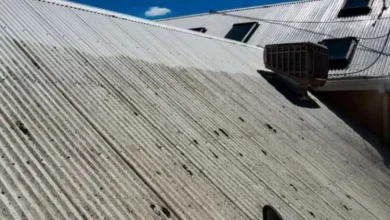Asbestos Removal – What You Need to Know Before Starting the Process

Asbestos removal is a critical process that requires careful planning and execution. Whether you’re a homeowner or a business owner, understanding the intricacies of asbestos removal is essential to ensure safety and compliance with regulations. This guide will walk you through the necessary steps and considerations before embarking on the asbestos removal journey.
Understanding Asbestos and Its Risks
Asbestos is a naturally occurring mineral that was widely used in construction materials due to its durability and resistance to heat. However, it poses significant health risks when its fibers become airborne and are inhaled. Prolonged exposure to asbestos can lead to serious health conditions, including lung cancer, mesothelioma, and asbestosis. Therefore, understanding the risks associated with asbestos is crucial before proceeding with any removal process.
Why Professional Asbestos Removal is Essential
Attempting to remove asbestos on your own can be extremely dangerous. Professional asbestos removal services are equipped with the necessary tools and expertise to handle the material safely. They follow strict guidelines to ensure that asbestos fibers do not contaminate the environment. For more information on professional asbestos removal, visit Blue A’s website.
Identifying Asbestos in Your Property
Before you can remove asbestos, you need to identify its presence in your property. Asbestos can be found in various materials, including insulation, roofing, flooring, and cement products. Hiring a certified asbestos inspector is the best way to determine if asbestos is present and assess the extent of contamination. The inspector will take samples and conduct laboratory tests to confirm the presence of asbestos.
Preparing for the Asbestos Removal Process
Once asbestos has been identified, preparation is key to a successful removal process. Here are some steps to consider:
- Hire a Licensed Asbestos Removal Contractor: Ensure that the contractor is licensed and experienced in handling asbestos removal.
- Develop a Removal Plan: The contractor should provide a detailed plan outlining the removal process, including timelines and safety measures.
- Notify Relevant Authorities: Depending on your location, you may need to notify local authorities about the planned asbestos removal.
- Secure the Area: The area where asbestos removal will take place should be sealed off to prevent contamination.
Executing the Asbestos Removal
During the removal process, the contractor will use specialized equipment to safely remove and dispose of asbestos materials. It’s important to ensure that all safety protocols are followed to minimize the risk of exposure. The area should be thoroughly cleaned and decontaminated after the removal is complete.
Post-Removal Considerations
After the asbestos removal process, it’s crucial to conduct a final inspection to ensure that all asbestos materials have been successfully removed. Air quality tests should be performed to confirm that the environment is safe for occupancy. Additionally, proper documentation of the removal process should be maintained for future reference.
Maintaining a Safe Environment
Once asbestos has been removed, it’s important to take steps to maintain a safe environment. Regular inspections and maintenance can help prevent future asbestos-related issues. If you suspect that asbestos may still be present, contact a professional for further assessment.
Conclusion: Ensuring Safety and Compliance
Asbestos removal is a complex process that requires careful planning and execution. By understanding the risks, hiring professional services, and following the necessary steps, you can ensure a safe and compliant removal process. Remember, the health and safety of you and your loved ones are paramount, so never compromise on the quality of asbestos removal services.



